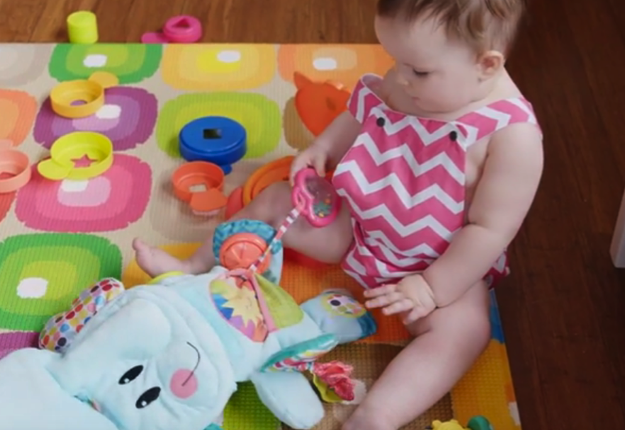7 Comment
Children & Family After 50 More Links About Us
What is restless legs syndrome?
Signs and symptoms
Lifestyle treatments
Self-help tips
Getting help
Medication
More help for restless legs syndrome
Resources and references
Back to top
Restless Legs Syndrome (RLS)
Symptoms, Treatment, and Self-Help
Restless Legs Syndrome (RLS)If you’re bothered by an overwhelming urge to move your legs when you lie down, or if there is an unpleasant tingling, aching, or itching sensations in your legs keeping you up at night, you may have a sleep disorder known as restless legs syndrome (RLS). Fortunately, restless legs syndrome can be treated with medical treatment, healthy lifestyle changes, and self-help remedies. Follow these steps to help you quiet your restless legs so you and your partner can enjoy a peaceful and refreshing night’s sleep.
What is restless legs syndrome (RLS)?
Restless legs syndrome (RLS) is a recognized neurological disorder that can interfere with resting or falling asleep. If you have restless legs syndrome, a typical night might go like this: You lie down in bed, ready to go to sleep, and just as your body begins to relax, an uncomfortable leg sensations begins to overwhelm your legs. You try to ignore the crawling, tingling, or itching in your legs, hoping it will go away, but it only gets worse. You toss and turn for a while, but eventually the urge to move is too much. You get out of bed to stretch and pace the floor and, for a moment, you find relief. But when you lie down again, the restless sensations in your legs start all over again.
Understanding RLS
Although restless legs syndrome (RLS) is common—many studies estimate that 1 out of 10 people have it—it hasn’t always been easy to find help and support. Unfortunately, many RLS sufferers never get proper treatment because it’s hard to explain and often misdiagnosed as being “nervous.” Other people—even doctors—may not take restless legs seriously, recognize the symptoms, or realize it’s a real medical condition. Those who haven’t experienced the distressing symptoms may not understand how severely restless legs syndrome can impact the quality of your rest and that of your bed partner.
The good news is that recent research has increased our understanding of restless legs syndrome, leading to more effective treatments. At the same time, restless legs syndrome is becoming more widely recognized. If you or your partner suffers from restless legs syndrome, there are plenty of options to help you find relief and get the sleep you need.
What causes RLS?
Experts believe that restless legs syndrome is caused by an imbalance of dopamine, a chemical that transmits signals between nerve cells in the brain. Restless legs syndrome is usually genetic, about 60% of people with restless legs have a family member with the condition. Although anyone can have restless legs syndrome, it is more common in older adults and women. In fact, about 40% of mothers experience temporary restless legs syndrome during pregnancy. Health conditions such as diabetes, iron deficiency, rheumatoid arthritis, and kidney failure can also trigger restless legs syndrome.
Signs and symptoms of restless legs syndrome (RLS)
Not only are the signs and symptoms of restless legs syndrome different from person to person, but also they can be tricky to explain. Some describe the leg sensations as “creeping,” “prickling,” “burning,” “tingling,” or “tugging.” Others say it feels as if bugs are crawling up their legs, a fizzy soda is bubbling through their veins, or they have a “deep bone itch.”
The symptoms of RLS can range from mildly annoying to severely disabling. You may experience the symptoms only once in a while, such as when you’re under a lot of stress, or they may plague you every night. In severe cases of restless legs syndrome, you may experience symptoms in your arms as well as your legs.
Here are some signs and symptoms of RLS:
Leg discomfort and strong urge to move – Uncomfortable sensations deep within the legs, accompanied by a strong, often irresistible urge to move them. Many describe the sensations as tingling, jitteriness, a “creepy crawly” feeling, itching, or pulling.
Rest triggers the symptoms – Leg pain is normally trigged by activity and relieved by rest, but with restless legs syndrome, the reverse is true. Restless leg symptoms start or become worse when you’re sitting, relaxing, or trying to rest.
Symptoms get worse night – RLS typically flares up at night, especially when you’re lying down. In more severe cases, the symptoms may begin earlier in the day, but they become much more intense at bedtime.
Symptoms improve when you walk or move your legs – The uncomfortable sensations temporarily get better when you move, stretch, or massage your legs. The relief continues as long as you keep moving.
Nighttime leg twitching – Many people with restless legs syndrome also have periodic limb movement disorder (PLMD), a sleep disorder that involves repetitive cramping or jerking of the legs during sleep. These leg movements further disrupt your sleep.
Do your symptoms indicate RLS?
How many of the questions below are true for you?
When you sit or lie down, do you have a strong desire to move your legs?
Does your desire to move your legs feel impossible to resist?
Have you ever used the words unpleasant, creepy-crawly, creeping, itching, pulling, or tugging to describe your symptoms to others?
Does your desire to move often occur when you are resting or sitting still?
Does moving your legs make you feel better?
Do you complain of these symptoms more at night?
Do you keep your bed partner awake with the jerking movements of your legs?
Do your ever have involuntary leg movements while you are awake?
Are you tired or unable to concentrate during the day?
Do any of your family members have similar complaints?
Does a trip to the doctor only reveal that nothing is wrong and there is no physical cause for your discomfort?
If you answered “yes” to a majority of these questions, you may have RLS.
Source: Restless Legs Syndrome Foundation
Lifestyle treatments for restless legs syndrome (RLS)
There is a lot you can do to take care of restless legs syndrome yourself. Mild RLS can often be treated with lifestyle changes alone. The following daytime habits can help reduce the frequency and severity of your restless legs symptoms.
Sleep better by sticking to a regular sleep schedule. Fatigue can worsen the symptoms of restless legs syndrome, so doing what it takes to get enough sleep is crucial. Try hitting the sack at the same time every night, (or try warm baths or reading in bed) allowing plenty of time for winding down.
Exercise in moderation. Daily activity, including moderate aerobic exercise and lower-body resistance training, can significantly reduce the symptoms of restless legs syndrome. Swim, go for a walk, take the stairs, or spend a few minutes doing jumping jacks. Keep in mind that excessive exercise—like training for a marathon—can actually make restless legs syndrome worse.
Cut back on caffeine. Caffeine often makes the symptoms of restless legs syndrome worse. Try reducing or eliminating your consumption of coffee, tea, soft drinks, and caffeinated foods such as chocolate.
Avoid alcohol and cigarettes. Many people with restless legs syndrome find that their symptoms improve when they stop drinking and smoking.
Consider dietary supplements. Check with a doctor or nutritionist to find out if you’re low on iron, vitamin B, folic acid, or magnesium. Deficiencies can bring on RLS.
Lose weight. If you’re overweight, dropping the extra pounds can often relieve or lessen the symptoms of restless legs syndrome.
Try practicing relaxation techniques such as yoga and meditation. Stress can make RLS symptoms worse. Daily stretching and meditation can promote relaxation and alleviate (RLS).
Keep a sleep diary of RLS symptoms
Click here to download Helpguide’s sleep diary. Logging changes in your diet, lifestyle, sleep habits, and routine might help you and your doctor make helpful changes to combat restless legs syndrome.
Self-help treatment for restless legs syndrome (RLS)
Living well with restless legs syndrome means knowing how to manage situations where you must be still. The following tips and tricks will help you control RLS so it doesn’t control you.
Pressure can help relieve the discomfort of restless legs syndrome. Try wearing compression socks or stockings or wrap your legs in bandages (but not so tight you’ll cut off circulation).
Try sleeping with a pillow between your legs. It may prevent nerves in your legs from compressing.
Try to find or create a work setting where you can be active. If you work at an office, look into a desk that lets you stand and type.
Tell friends, family, and coworkers why you have to move more than others. They’ll likely be accommodating and want to help you create a healthy environment.
Choose an aisle seat at movies and on planes so that you can get up and move.
Give yourself stretch breaks at work and during long car rides.
Stretches for RLS
Simple stretching can help stop the symptoms of restless legs syndrome in their tracks. Here’s a handful to help you get started.
Calf stretch – Stretch out your arms so that your palms are flat against a wall and your elbows are nearly straight. Slightly bend your right knee and step your left leg back a foot or two, positioning its heel and foot flat on the floor. Hold for 20 to 30 seconds. Now bend your left knee while still keeping its heel and foot flat on the floor. For a deeper stretch, move your foot back a bit farther. Switch legs and repeat.
Front thigh stretch – Standing parallel to a wall for balance, grab and pull one of your ankles toward your buttock while keeping the other leg straight. Hold for 20 to 30 seconds. Switch legs and repeat.
Hip stretch – Place the back of a chair against the wall for support and stand facing the chair. Raise your left foot up and rest it flat on the chair, with your knee bent. (Or try placing your foot on a stair while holding the railing for balance.) Keeping your spine as neutral as possible, press your pelvis forward gently until you feel a stretch at the top of your right thigh. Your pelvis will move forward only a little. Hold for 20 to 30 seconds. Switch legs and repeat.
Tips for relieving RLS symptoms in the moment
Get up and walk around
Take a cold shower
Soak in a hot tub
Massage your legs
Take an over-the-counter pain reliever
Distract yourself with a game or activity
Apply hot or cold packs to your legs
Do leg stretches and exercises
Treatment for restless legs syndrome (RLS)
If self-help doesn’t relieve your restless legs syndrome symptoms, you may benefit from visiting a doctor or a sleep specialist.
Diagnosing RLS
While there are no laboratory tests that can determine if you have restless legs syndrome, your doctor can diagnose it by reviewing your medical history and conducting a physical exam. To diagnose RLS, your doctor will request:
A complete medical history
A survey to see if anyone else in your family has similar symptoms
A diagnostic interview, to rule out other medical conditions
A blood test for low iron levels
Your doctor may also review the medications you’re taking as some prescription and over–the–counter drugs can make the symptoms of restless legs syndrome worse.
Medications that can make RLS worse
Over-the-counter sleeping pills
Antihistamines (found in many cold and allergy pills such as Benadryl, NyQuil, and Dimetapp)
Anti-nausea medications (such as Antivert, Compazine, and Dramamine)
Calcium channel blockers (used for high blood pressure and heart problems)
Antidepressants (such as Prozac, Effexor, and Lexapro)
Antipsychotics (used for bipolar disorder and schizophrenia)
If a medical condition, such as iron deficiency, diabetes, or nerve damage is triggering your restless legs syndrome, treating the underlying problem may relieve your RLS symptoms. But if there is no underlying condition and lifestyle changes don’t bring enough relief, you may need medication to reduce the restlessness in your legs.
Medication as treatment for restless legs syndrome (RLS)
No single medication works for everyone with restless legs syndrome. In fact, a drug that relieves one person’s restless legs may actually make your symptoms worse. In addition, many people with restless legs syndrome find that medications that work initially become less effective over time.
It’s also important to be aware of potential side effects, such as nausea, headache, and daytime sleepiness. If you struggle with compulsive shopping, gambling, or binge eating there is also a risk that medication for RLS could make these problems worse.
Before using medication for the treatment of RLS
Have you…
given self-help a fair shot with non-medication treatments?
considered how medication side effects may impact your life?
weighed the pros and cons of medication vs. lifestyle changes?
talked to your doctor about existing health conditions and drugs you’re taking?
Parkinson’s medication for RLS
The US Food and Drug Administration (FDA) has approved three Parkinson’s medications for the treatment of restless legs syndrome, with the latest addition, the dermal patch Neupro, approved in April, 2012. The three are:
pramipexole (Mirapex)
ropinirole (Requip)
rotigotine transdermal system (Neupro)
Other Parkinson’s drugs that are sometimes used to treat RLS include Sinemet (carbidopa/levodopa), cabergoline and pergolide. Side effects of Parkinson’s medications for restless legs syndrome include nausea, lightheadedness, fatigue, and an increased risk of heart disease.
Other common medications for RLS
Prescription painkillers (such as codeine, oxycodone, Vicodin, and Percocet) can provide relief in severe, unrelenting cases of restless legs syndrome. However, prescription painkillers can be addictive. Side effects include nausea, dizziness, and constipation.
Sleep medications and muscle relaxants (such as Ambien, Sonata, and Klonopin) can help you sleep better if the symptoms of restless legs syndrome keep you up at night. However, these medications do not eliminate the uncomfortable leg sensations and can cause daytime drowsiness.
Anti-seizure medications (such as Neurontin, Tegretol, and Epitol) can be effective for painful daytime symptoms of restless legs syndrome. Side effects include dizziness and drowsiness.
More help for restless legs syndrome (RLS)
Can’t Sleep? – Causes, Cures, and Treatments for Insomnia
How to Sleep Better – Tips for Getting a Good Night’s Sleep
Relaxation Techniques for Stress Relief – Finding the Relaxation Exercises That Work for You
Sleeping Pills and Natural Sleep Aids – What’s Best for You? What You Need to Know About Sleep Aids and Sleeping Pills
Resources and references
Symptoms and general information on restless legs syndrome (RLS)
Restless Legs Syndrome – In-depth guide to restless legs syndrome (RLS), including symptoms, causes, self-help, and treatment. (Harvard Health Publications, Pri-Med Patient Education Center)
Restless Legs Syndrome: Causes, Diagnosis, and Treatment (PDF) – For the patient living with restless legs syndrome (RLS). Learn about symptoms, diagnosis, and treatment. (Restless Legs Syndrome Foundation)
What is Restless Legs Syndrome? – Covers the signs and symptoms, causes, diagnosis, and treatment of restless legs syndrome (RLS). (National Heart Lung and Blood Institute)
Diagnosis: A Syndrome That’s Got Legs – Explains the strain restless legs syndrome (RLS) can cause on your heart, health, and marriage. (Psychology Today)
Restless Legs Syndrome – In depth overview about RLS. Discusses symptoms, causes, and treatment. (Cleveland Clinic)
Treatment for restless legs syndrome (RLS)
Comprehensive Review of Medications used in Treating RLS and PLMD – Learn about medications and supplements used in the treatment of restless legs syndrome (RLS). (Southern California RLS Support Group)
Find a Doctor in the U.S. – Search for a doctor from a directory of healthcare providers who have special interest in the treatment of restless legs syndrome (RLS). (RLS Foundation)
Support for restless legs syndrome (RLS)
Support Groups in the U.S. and Canada – Search for a restless legs syndrome (RLS) support group in your area of U.S. or Canada. (RLS Foundation)
Self-help treatment for restless legs syndrome (RLS)
12 Home Remedies for Restless Legs Syndrome – More self-help tips and tricks to combat RLS without medicine. (Discovery Health)
Restless Legs Syndrome: ‘Creepy-Crawly’ Legs Causing Distress? (PDF) – Self-help guide to restless legs syndrome (RLS) includes stretches to relieve leg discomfort and a symptoms diary you can bring to your doctor. (Harvard Medical School)
Authors: Melinda Smith, M.A., Lawrence Robinson, and Robert Segal, M.A. Last updated: February 2015.
Posted by Cynthea Jenke, 12th April 2015















-

-
-
ChiWren said
- 30 Sep 2024
Reply
-

-
-
mom81879 said
- 25 Sep 2015
-

-
-
mom81879 said
- 20 Sep 2015
-

-
-
mom57522 said
- 04 Jun 2015
-

-
-
smiles said
- 25 Apr 2015
-

-
-
BellaB said
- 14 Apr 2015
Post a comment10:34 pm
7:58 am
4:30 pm
9:31 pm
4:28 pm
3:16 pm
-

-
-
Cynthea Jenke replied
- 17 Apr 2015 , 9:57 pm
ReplyTo post a review/comment please join us or login so we can allocate your points.